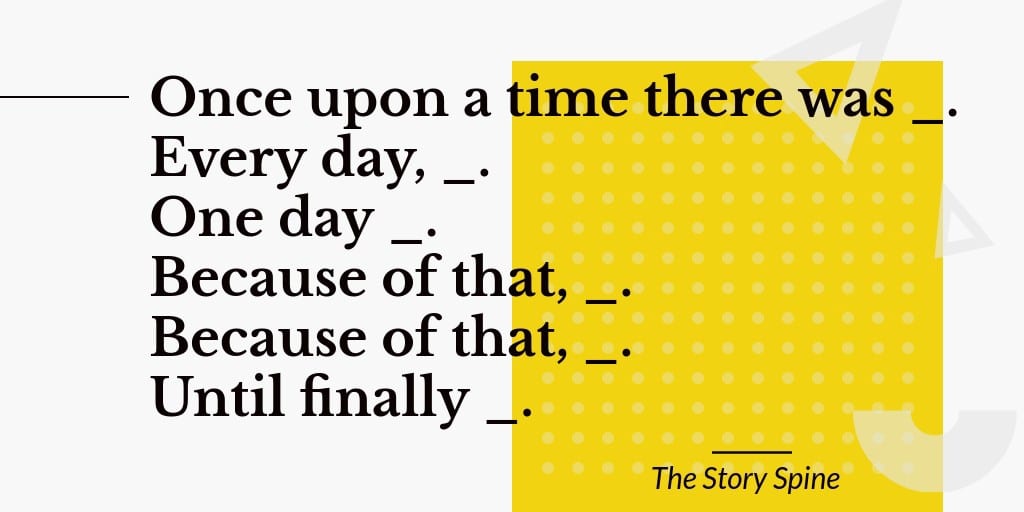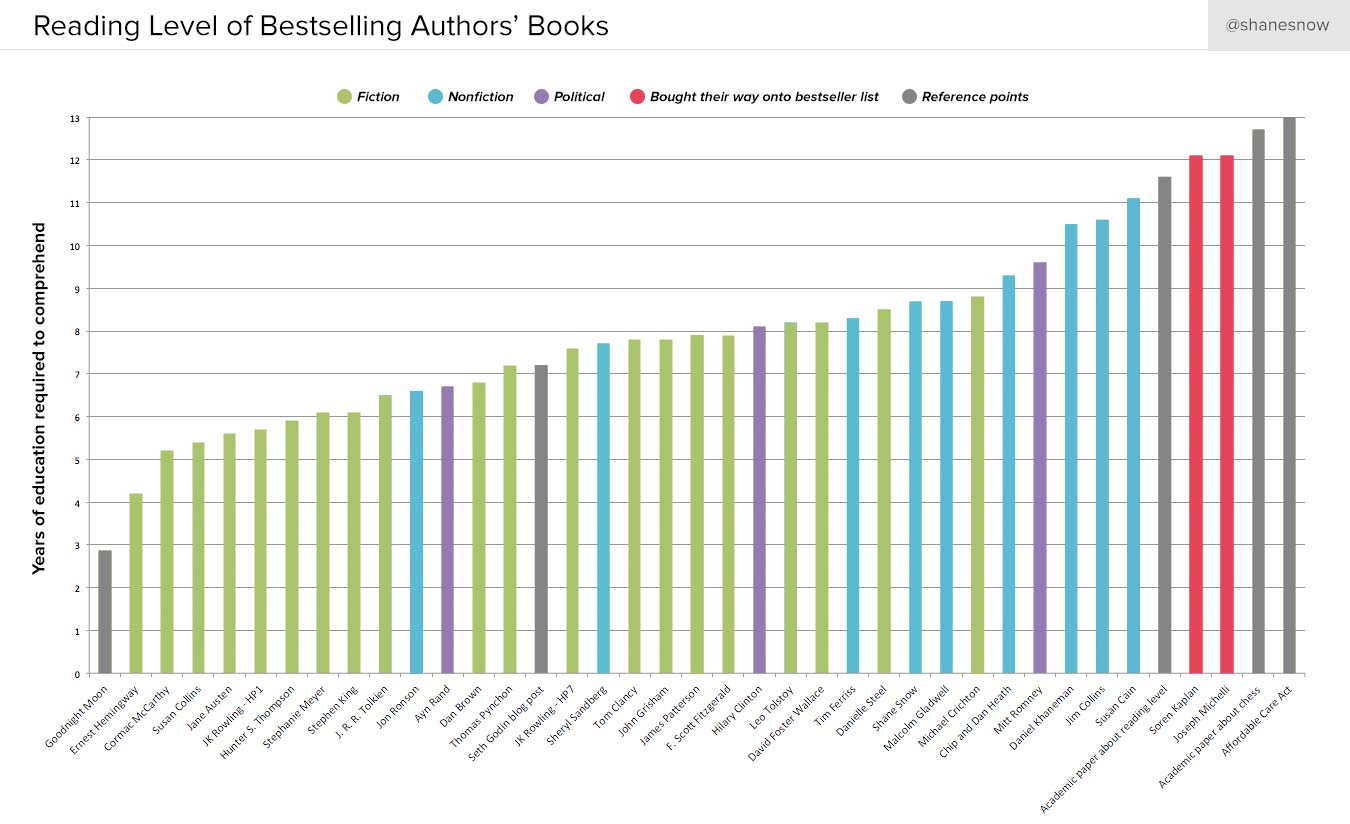
The Art of Copywriting: How to Write Better Captions that Get Engagement
What you’re trying to do, when you tell a story, is to write about an event in your life that made you feel some particular way. And what you’re trying to do, when you tell a story, is to get the audience to have that same feeling. – Pete Docter
While we don’t typically associate the art of copywriting with social media captions, the two are deeply intertwined.
A really good caption informs us about the things we cannot immediately see and encourages us to look at an image or video more closely.
From specific writing techniques to the psychology behind bringing your stories and captions to life, you’ll leave today’s episode with several new copywriting tactics and strategies to try.
The Art of Copywriting: How to Write Better Captions that Get Engagement
What follows is a detailed summary of the episode transcript. Feel free to jump around and explore the art of copywriting in this week’s Science of Social Media:
- A brief overview of storytelling
- Factors that make for great captions
- Principles of effective copywriting
- 3 top copywriting techniques to improve results
Let’s dive in!
A brief overview of storytelling
Stories don’t always look like what you might find in a Jane Austin novel or in The New York Times.

The Story Spine by Pixar
Today on social media, stories come in the form of captions, videos, photos, and text. Or as we see most often, a caption plus a video or a photo.
The caption could be multiple lines or it could be one sentence or even one word. The most important part, no matter the length of the caption, is that you’re trying to get the audience to feel something.
One way you can do this is to pull apart the stories you like. Self knowledge and awareness are at the the root of all great storytelling.
Before posting to social media ask critical questions like:
- What will my audience think?
- What will my audience feel?
- How will they react to this content?
- Will they find it entertaining, or is it just entertaining to me?
The ability to identify with audiences and post content that reflects those feelings and beliefs is one of the most underrated skills of today’s top social media managers.
Factors that make for great captions
One of the first steps in relating to our audience on a deeper level and increasing engagement on social media is simply writing better captions.
First, let’s define what a social media caption is:
A caption in its simplest form is the the title of an image or video. A full caption takes the form of descriptive text, usually a few words or sentences.

A really good caption informs us about the things we cannot immediately see and encourages us to look at the image or video more closely.
There relationship is mutually beneficial and there is dependence between a well written caption and the content.
The caption can bring the content to life by providing context and meaning. It is also the link between the article/story/text and the image.
A good caption is a piece of writing that should be concise, accurate, informative and as carefully crafted as the image itself.
For marketers it’s absolutely vital to get the caption right. A great caption can help sell an image or video and equally, a bad caption can make people scroll right past it.
Above all keep it simple and check that facts are 100 percent accurate.
Principles of effective copywriting
Now that we have a more specific definition of what a caption is and what it’s not, let’s discuss about how to improve your captions.
Simpler, shorter copywriting
First and foremost, it’s the more often than not, simpler, shorter captions will generate the most engagement.
Examining the world’s largest brand accounts like Nike, 9Gag, Chanel, or Tasty, their visuals are stunning, but they’re captions are equally as captivating.
If you find that you tend to write longer captions, practice editing them down so that you get your point across in the fewest words possible.
“Writing is human but editing is divine.” – Stephen King
In other words, cut out the fluff and get right to the heart of the message.
One way to do this is to avoid using too many adverbs. Most adverbs, especially adverbs ending in -ly can be removed from your caption. For example:
- A mountain isn’t incredibly pretty – it’s beautiful.
- The shoes aren’t really expensive – they’re plush.
- The donuts aren’t exceedingly delicious – they’re delectable.
Spend time finding the right words to avoid using adverbs as crutches.
Flesch-Kincaid Index
The other aspect of simpler, shorter captions is the simpler part. I think it’s fun to think about this in terms of the Flesch-Kincaid Index, which is a test to rate how difficult a piece of writing would be to comprehend.
Three factors determine the test’s score: total sentences, total words, and total syllables.
Contently wrote a great article back in 2015 that looked at some of the most famous novels throughout history and what their Flesch-Kincaid Index levels are.
What they found was that legendary novels from authors like Cormac McCarthy, Jane Austin, Tim Ferris, J.K. Rowling, Hemingway, and countless others are at a 7th to 8th grade reading level.

In fact, 75 percent of U.S. adults read just above a 5th grade reading level and 50 percent of U.S. adults read at an 8th grade reading level. Only about 12 percent of U.S. adults read at a 12th grade level or higher.
Quick tips for copywriting and readability:
- Use short words whenever possible.
- State your thoughts as simply as you can.
- Keep your sentences short. How short? Real short!
Narrative Urgency
Narrative urgency means that every sentence must serve a purpose.
Your first sentence must make the reader want to read the second.
The second sentence must propel the reader to the third. So forth and so on until the very end. If a sentence doesn’t move the narrative forward—if it doesn’t make the writing more urgent—then it must be cut, no matter how clever or precious it seems.
This is also a good tip for those that have found success with longer captions.
While shorter captions tend to perform the best on social, there are definitely brands that have built a brand by telling stories with their captions.
Facts and figures
When in doubt, start with science!
Share facts, figures, data, and statistics to lure your audience in. Using facts and data help take your ideas from abstract to concrete.
Copywriters have been using this technique for ages. They know they must make their copy believable, and instead of fighting with rational ideas, they simply show facts and numbers.
At Buffer, simply using numbers has been shown to increase downloads and traffic. Some of our most popular podcast episodes are ones that include a concrete number or the words “original research” in the title.
Data makes a huge difference and can be utilized in so many creative ways.
3 top copywriting tips to improve results
1. Punctuation. Is. Pace.
To add variety and cadence to your writing, play around with different punctuation: periods, commas, dashes, colons, semicolons. Short sentences communicate tension. Longer run-on sentences, on the other hand, help establish a frantic, hurried rhythm.
2. Expand your vocabulary to make your writing more precise
As the old saying goes, there’s no need to use a ten-dollar word when a ten-cent word will suffice. But having more tools in your toolbox will allow you to select the most appropriate tool for the job.
3. Don’t waste the reader’s time
Their time and attention are two of their most precious resources. We don’t want to force a reader to spend three minutes reading something that we could’ve and should’ve communicated in 30 seconds. If you want to earn your reader’s trust, don’t waste their time.
Summing up what makes a really good caption:
Put simply, a good caption is one that provides context, adds personality, and inspires your followers to take action in the shortest time possible.
How to say hello to us
We would all love to say hello to you on social media – especially Twitter!
- Hailley on Twitter and Hailley’s Website
- Brian on Twitter and Brian’s Website
Thanks for listening! Feel free to connect with our team at Buffer on Twitter, Buffer on Facebook, our Podcast homepage, or with the hashtag #bufferpodcast.
Enjoy the show? It’d mean the world to us if you’d be up for giving us a rating and review on iTunes!
—
About The Science of Social Media podcast
The Science of Social Media is your weekly sandbox for social media stories, insights, experimentation, and inspiration. Every Monday (and sometimes more) we share the most cutting-edge social media marketing tactics from brands and influencers in every industry. If you’re a social media team of one, business owner, marketer, or someone simply interested in social media marketing, you’re sure to find something useful in each and every episode. It’s our hope that you’ll join our 27,000+ weekly iTunes listeners and rock your social media channels as a result!
The Science of Social Media is proudly made by the Buffer team. Feel free to get in touch with us for any thoughts, ideas, or feedback.
Try Buffer for free
180,000+ creators, small businesses, and marketers use Buffer to grow their audiences every month.
Related Articles

Instagram Stories was one of the most dynamic social media channels in 2019. So much happened with Stories — from new developments with the product to strong returns on Stories ads and organic reach. Over 500 million people use Instagram Stories every day. I’m definitely among that group. And at Buffer, Stories has been a major focus in 2019 as well.

Social commerce is one of the hottest trends in social media today, and it looks to have an even bigger impact in 2020. Get all the details here.

These days, we live in a world of infinite supply… In just a few clicks, anyone can start a business. Anyone can create products, build an online store, publish ads, and reach an audience online. This means that every market is becoming flooded with businesses offering similar products, features, and solutions. So to stand out you need to have a brand that your customers connect with, and care about deeply. In this post, we’ll be sharing some tips and strategies to help you to build your bran